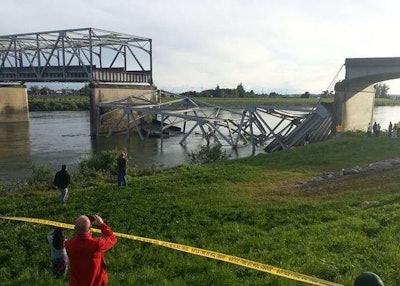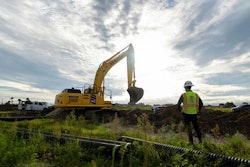 The partial collapse of a bridge over the Skagit River on Interstate 5 in Washington has turned attention to the need for infrastructure funding.
The partial collapse of a bridge over the Skagit River on Interstate 5 in Washington has turned attention to the need for infrastructure funding.According to a report from our sister site Better Roads, 25 percent, or 151,845 of all U.S. bridges were classified as deficient in 2012.
Those numbers were a part of the U.S. Government Accountability Office ‘s(GAO) testimony last week before the Senate Commitee on Appropriations’ Subcomittee on Transportation, Housing and Urban Development, and Related Agencies, Better Roads reports.
The “deficient” classification includes bridges that are both structurally deficient and functionally obsolete.
Rather than implying that a bridge could collapse at any moment or is unsafe to drive on, “structurally deficient” means that there are elements of the bridge that need to be repaired and/of monitored.
Likewise, the term “functionally obsolete” has a more ominous ring to it than its true meaning. Functionally obsolete bridges are those with an outdated design including narrow shoulders or a low clearance. The bridge on Interstate 5 that partially collapsed into the Skagit River was considered functionally obsolete due to its low clearance that had been hit by trucks several times before the collapse.
The GAO reported that despite the high percentage of deficient bridges, since 2002 that the number has actually decreased as the total number of bridges has increased. However, the GAO stressed the importance of the federal government achieving a better understanding of the impact of federal investment in bridges, noting that such a measurement is hard to come by.
The GAO also stated that “Congress and the administration need to agree on a long-term plan for funding surface transportation” to replace the MAP-21 bill. The agency added that continuing to fund the Highway Trust Fund through transfers from the general fund will not sustain necessary transportation projects.









